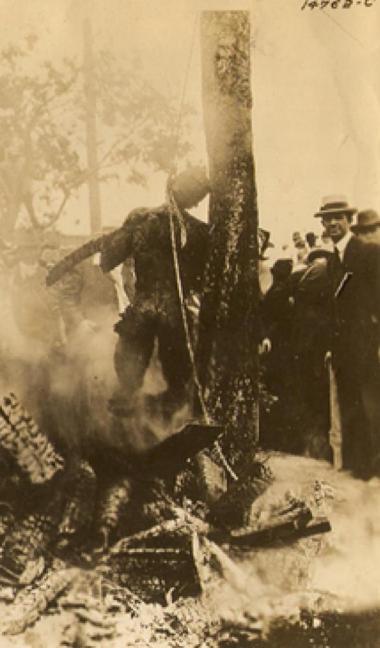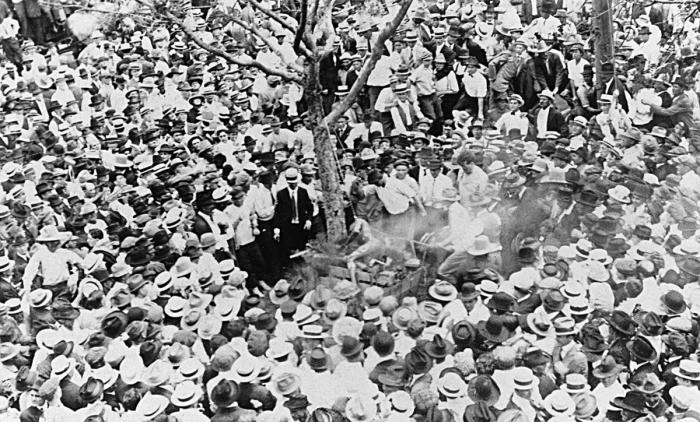
On May 15, 1916, more than 15,000 people (about half the town's population) gathered near Waco, Texas, to watch the lynching of Jesse Washington (1898?–1916), a farm laborer who was illiterate and mentally disabled. Jesse had been accused and convicted of the bludgeoning death of Lucy Fryer on the family's farm where Jesse worked, although some suspected her husband was the murderer. Law enforcement officers had coerced Jesse into signing (with an X) a confession, saying it would keep him safe from a lynching. After the jury's four-minute deliberation and guilty finding, a mob seized Jesse, put a chain around his neck and dragged him through the streets of Waco toward his death site. Along the way, onlookers stabbed him with knives, struck him with shovels and clubs, and threw bricks at him. At the public square, someone in the crowd lassoed him with a second chain that they tossed over the limb of a tree. Another person in the mob cut off one of his ears and castrated him. Several men then yanked the chain, hoisting Jesse into the air, while others poured oil on him and set a fire beneath him. After he died, they chained him to a telephone pole for all to see.
When his dead body cooled, several local school boys removed Jesse's charred skull, extracted his teeth, and sold them for five dollars apiece. Other people sold individual links from the chains used in the lynching for twenty-five cents.
When NAACP officials at their headquarters in New York City learned of the lynching, they launched an investigation without help from local Waco officials. Although they learned the names of several mob leaders, local authorities rebuffed their information. In July 1916, to bring visibility to the lynching and to combat the unchecked violence against Jesse and other black lynching victims in the South, the NAACP published a booklet, "Waco Horror," to accompany its magazine, the Crisis. The eight-page booklet, which detailed Jesse's murder, reached the magazine’s 42,000 subscribers and was distributed to 750 newspapers and every member of Congress. The NAACP’s anti-lynching campaign also distributed 12,000 copies as promotional material.
In May 2006, 90 years after the lynching of Jesse Washington, the Waco Interracial Coalition met on the steps of the Waco courthouse to read a resolution condemning and apologizing for the brutal lynching of the teenaged boy. But many people in the community, including Ray Meadows, a McLennan County commissioner, refused to apologize, saying they had nothing to do with it. Another county commissioner, Lester Gibson, the only African-American commissioner, said the only way to heal the long-standing wound in the African-American community is through reconciliation.
In May 2016, the Community Race Relations Coalition and the NAACP commemorated the 100th anniversary of Jesse's murder by issuing a resolution and by sponsoring events, including a lecture series, a march, and a town hall meeting—as an opportunity for whites and blacks to gather and reflect on a difficult shared history. The groups also advocated for a state historical marker for the lynching.


